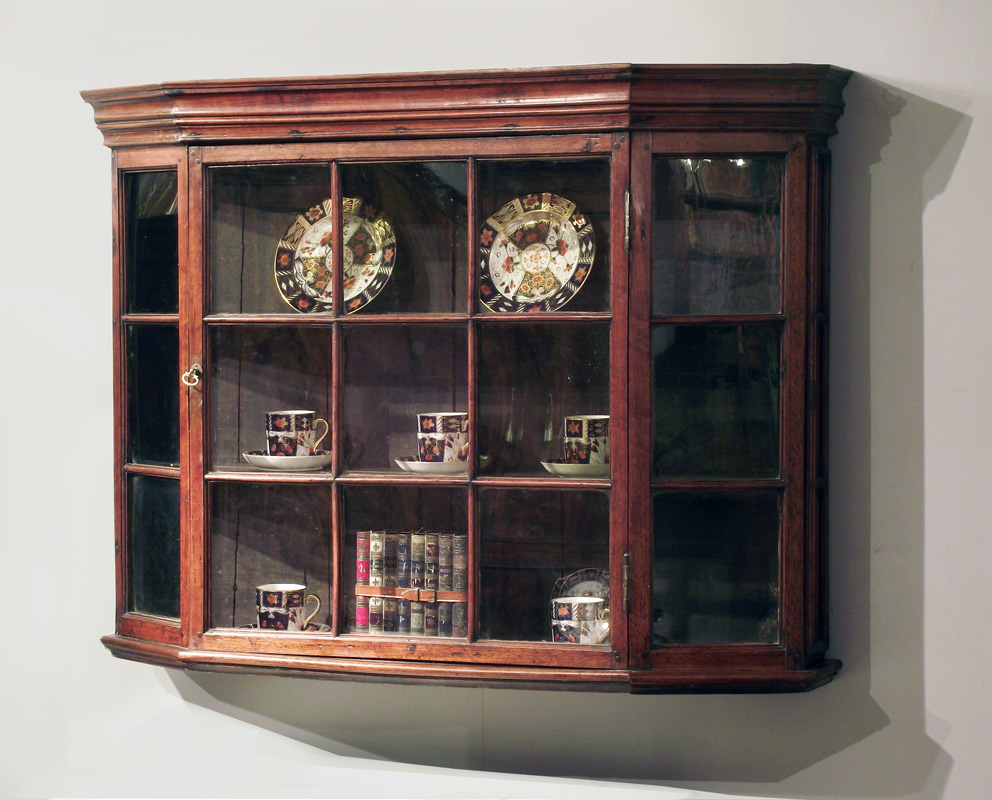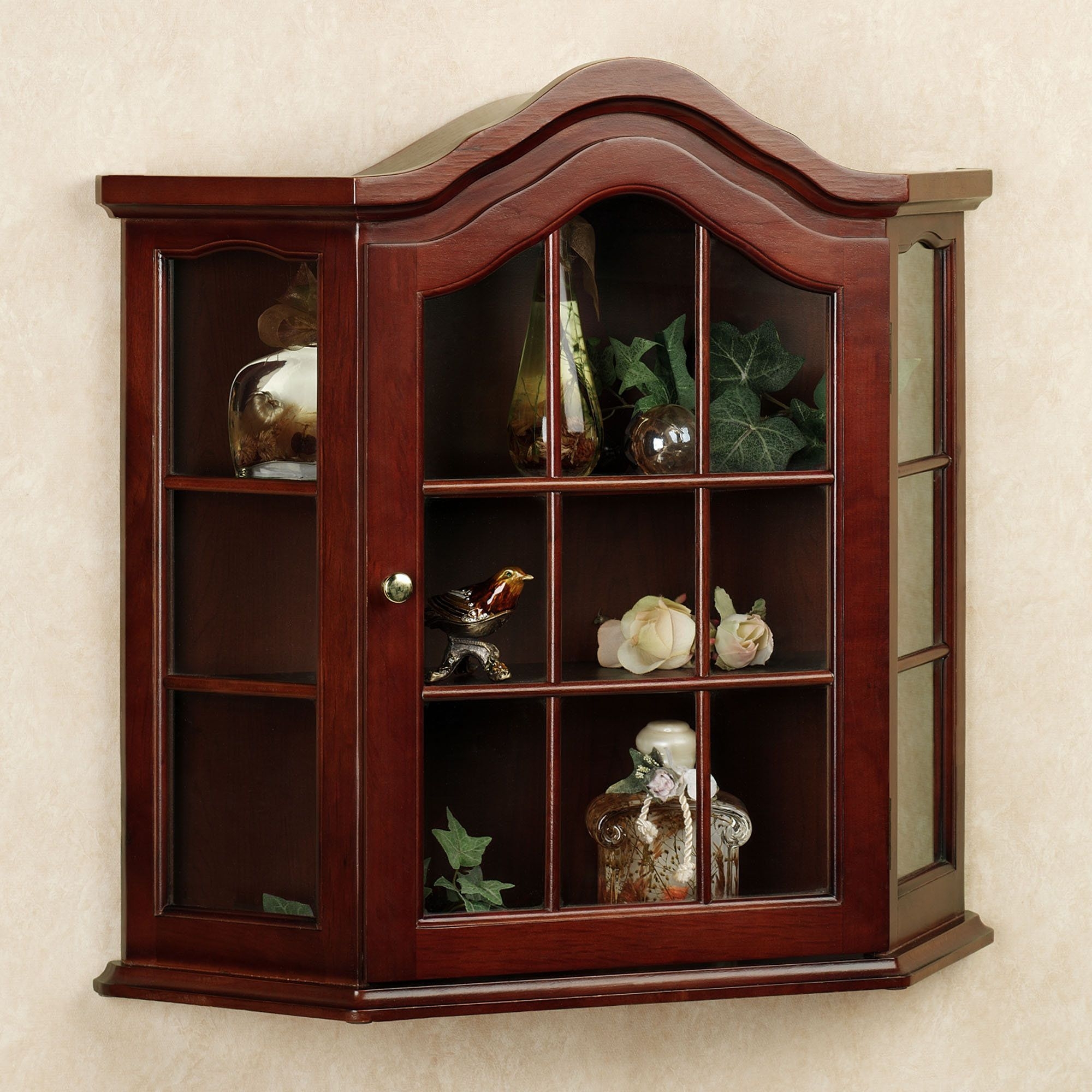The Allure of Antique Wall Display Cabinets

Antique wall display cabinets are more than just storage solutions; they are time capsules that encapsulate history, craftsmanship, and the evolution of design. These cabinets, often passed down through generations, hold a unique appeal, adding a touch of elegance and character to any modern interior.
Historical Significance
Antique wall display cabinets have a rich history, their evolution mirroring the changing styles and materials of different eras.
- Early Cabinets (17th-18th Centuries): These cabinets were often crafted from sturdy hardwoods like oak and walnut, featuring intricate carvings and ornate details. They served both practical and decorative purposes, showcasing prized possessions and reflecting the wealth and status of their owners. Examples include the iconic “court cupboards” of the 17th century, known for their elaborate carvings and multiple tiers.
- Victorian Era (19th Century): The Victorian era saw a surge in popularity for display cabinets, with a focus on ornate designs, often featuring intricate marquetry, elaborate glasswork, and elaborate hardware. These cabinets often reflected the prevailing aesthetic of the time, showcasing a fascination with nature, mythology, and exotic cultures.
- Art Nouveau and Art Deco (Early 20th Century): The early 20th century saw a shift towards more streamlined and geometric designs, exemplified by the Art Nouveau and Art Deco movements. Display cabinets of this period often featured clean lines, bold geometric patterns, and innovative materials like stained glass and metalwork.
Craftsmanship and Materials
Antique wall display cabinets are testaments to the skill and artistry of their creators. The craftsmanship and materials used in these cabinets are what give them their enduring value and appeal.
- Wood: Antique cabinets were often made from high-quality hardwoods like oak, walnut, mahogany, and cherry. These woods were carefully selected for their durability, beauty, and ability to be intricately carved. The rich patina that develops on these woods over time adds to their charm and historical significance.
- Glass: The glass used in antique cabinets was often hand-blown or hand-cut, creating unique textures and patterns. Some cabinets featured elaborate etched or stained glass, adding to their artistic appeal.
- Hardware: The hardware used on antique cabinets was often made from brass, bronze, or iron. These pieces were often intricately designed and handcrafted, adding to the overall aesthetic of the cabinet.
Appeal in Modern Interiors
Antique wall display cabinets have a timeless appeal that transcends trends. They add a touch of history, character, and a sense of nostalgia to any modern interior.
- Uniqueness and Character: Antique cabinets are one-of-a-kind pieces that bring a unique and distinctive element to a room. Their intricate details, aged patina, and historical significance make them stand out from mass-produced furniture.
- Sense of History: Owning an antique cabinet is like owning a piece of history. It connects you to a bygone era and adds a sense of depth and story to your home. These cabinets can be a conversation starter, sparking discussions about their origins and the people who may have owned them before.
- Versatile Display Options: Antique cabinets offer a variety of display options. Their glass doors allow you to showcase treasured objects, collections, or artwork, while their shelves provide ample storage space for books, trinkets, or other personal items.
- Nostalgia and Comfort: Antique cabinets can evoke a sense of nostalgia and comfort. Their familiar shapes and designs can create a warm and inviting atmosphere in a room. They can also serve as a reminder of cherished memories and family history.
Types of Antique Wall Display Cabinets

Antique wall display cabinets are a diverse category, encompassing a wide range of styles and purposes. Understanding the various types and their characteristics is crucial for appreciating their historical significance and choosing the right one for your home.
Design, Purpose, and Materials
Antique wall display cabinets are classified based on their design, intended purpose, and materials used. These factors influence their aesthetic appeal, functionality, and historical context.
“The design of an antique wall display cabinet reflects the prevailing artistic and cultural trends of its time.”
The materials used in construction, such as wood, glass, and metal, also play a significant role in determining the cabinet’s character and value.
Popular Styles and Key Features
Antique wall display cabinets represent a diverse spectrum of styles, each with its unique features and appeal. Here are some popular examples:
- Victorian: These cabinets are characterized by intricate carvings, ornate details, and a preference for dark, rich woods like mahogany and walnut. They often feature glass doors with beveled edges and brass hardware.
- Art Deco: Art Deco cabinets showcase geometric patterns, bold colors, and sleek lines. They frequently incorporate materials like chrome, glass, and exotic woods.
- Mid-Century Modern: Mid-century modern cabinets emphasize simplicity and functionality. They often feature clean lines, natural materials like teak and rosewood, and minimalist hardware.
Functionality and Intended Uses
Antique wall display cabinets serve a variety of purposes, each designed to meet specific needs. Here are some common types and their intended uses:
- Curio Cabinets: These cabinets are designed for displaying and protecting small, valuable objects like figurines, glassware, and other collectibles. They often feature multiple shelves and glass doors to showcase the contents.
- China Cabinets: These cabinets are specifically designed for displaying and storing fine china and other tableware. They typically have a large, open area for displaying dishes and a lower section with drawers for storing silverware and other items.
- Apothecary Cabinets: These cabinets were originally used by pharmacists and apothecaries to store and dispense medicines. They often feature multiple small drawers and shelves with labels for various remedies.
Styling and Displaying with Antique Wall Display Cabinets: Small Antique Wall Display Cabinet

Antique wall display cabinets are not just storage solutions; they are captivating pieces that elevate the aesthetic of any space. The key to unlocking their full potential lies in understanding how to style them effectively. This involves selecting the right cabinet, curating a display that reflects your taste, and enhancing the presentation with lighting and color schemes.
Selecting the Right Antique Cabinet for Your Space and Style
When choosing an antique cabinet, consider the size, style, and material to ensure it complements your existing décor.
- Size and Space: Measure the available wall space and choose a cabinet that fits proportionally. Oversized cabinets can overwhelm a small room, while tiny ones may get lost in a large space.
- Style: Antique cabinets come in various styles, from ornate Victorian to minimalist Arts and Crafts. Consider your personal taste and the overall aesthetic of the room. For instance, a French Provincial cabinet would complement a farmhouse-style kitchen, while a sleek Art Deco cabinet would suit a modern living room.
- Material: Antique cabinets are crafted from diverse materials, including wood, glass, and metal. The material choice influences the cabinet’s aesthetic and functionality. A mahogany cabinet exudes warmth and richness, while a glass-fronted cabinet showcases the contents.
Displaying Collectibles, Artwork, and Decorative Objects
Antique wall display cabinets offer a platform to showcase cherished items and create a visually engaging focal point.
- Curating a Collection: Group items with a common theme or style. For example, a collection of vintage teacups, antique books, or porcelain dolls can be displayed together to create a cohesive and visually appealing arrangement.
- Arranging Artwork: Framed prints, photographs, and paintings can be hung within the cabinet or placed on shelves. Use a mix of sizes and orientations to create visual interest. Consider using matting to enhance the presentation of smaller pieces.
- Adding Decorative Objects: Incorporate decorative elements like vases, sculptures, or vintage clocks to add dimension and personality to the display. Experiment with different heights and textures to create a visually balanced arrangement.
Enhancing the Display with Lighting and Color Schemes, Small antique wall display cabinet
Lighting and color schemes play a crucial role in highlighting the beauty of the antique cabinet and its contents.
- Lighting: Install strategically placed lighting to illuminate the cabinet and showcase its intricate details. Consider using LED spotlights or track lighting to highlight specific items within the display. Avoid using harsh overhead lighting, which can create unwanted shadows.
- Color Schemes: The color scheme of the cabinet and its surroundings can influence the overall aesthetic. For a traditional look, pair the cabinet with warm, earthy tones like beige, brown, and cream. For a more modern feel, opt for cool colors like gray, blue, or green. Avoid using too many colors, as it can create a cluttered and distracting look.
A small antique wall display cabinet, with its intricate carvings and faded patina, whispers of a bygone era. It’s a perfect vessel for showcasing cherished trinkets and heirlooms, adding a touch of vintage charm to any room. But if you need to tackle a larger organizational challenge, consider the robust practicality of solid wood garage storage cabinets , their sturdy construction and ample storage space offering a welcome solution for even the most cluttered garage.
Returning to the delicate elegance of the antique wall cabinet, its presence reminds us that sometimes the most beautiful things are found in the smallest details.
A small antique wall display cabinet, with its intricate carvings and warm patina, can be a focal point in any room. To complement its vintage charm, consider the best color wood floor for honey oak cabinets, as it can enhance the overall aesthetic.
Choosing the right floor color can create a harmonious balance between the cabinet’s warmth and the room’s overall style, making the antique cabinet truly shine.
